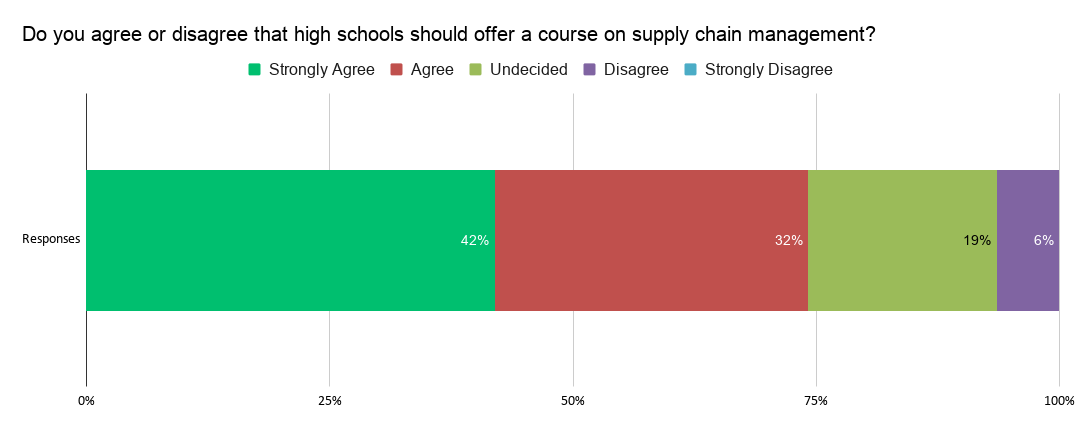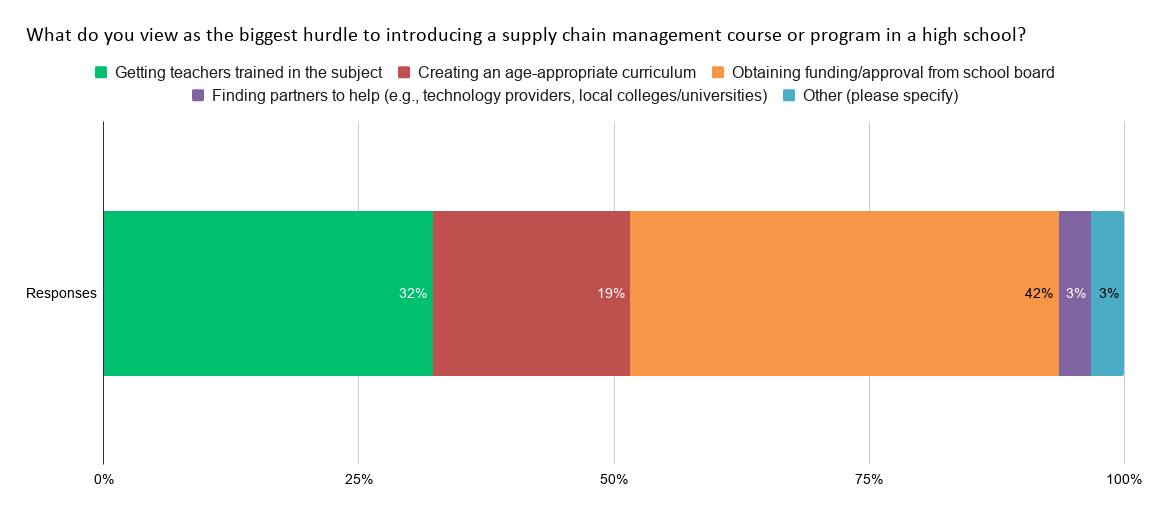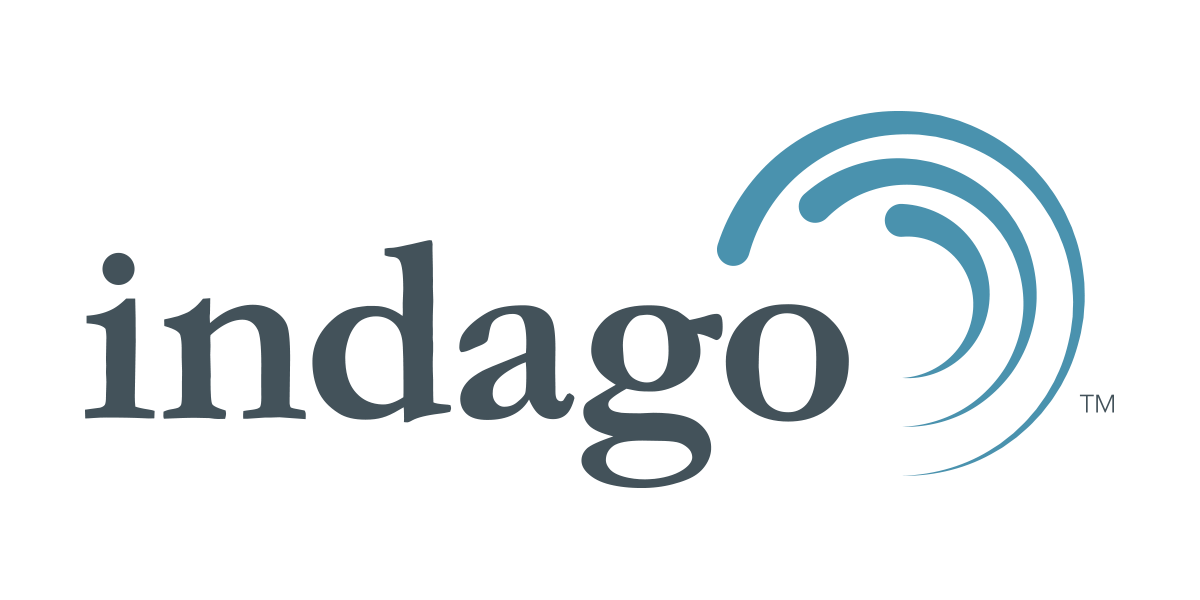In March 2011, I wrote a post making the case that, like in baseball, the supply chain and logistics industry needed a farm system to attract and develop the next generation of leaders. As I wrote at the time:
Sure, there are a number of universities (but certainly not enough) with supply chain and logistics programs, and many employers recruit from these schools, To continue with the baseball analogy, if employers are the Big Leagues, then universities are Triple A. But there’s nothing else — no AA or A divisions where young students can explore their interest in the field and begin developing their knowledge and skills in balancing supply with demand, in making tradeoff decisions between inventory and transportation costs, in resolving issues and exploring opportunities with suppliers and customers, in using software applications like TMS and WMS, and so on.
I revisited this topic a few weeks ago via Indago, our supply chain and logistics research community. We asked our members if their local high school(s) offered a supply chain management course or program. The vast majority of our respondents (90%) said that their local high schools either do not offer a supply chain management course or program (45%) or they do not know (45%).
We also asked them, “Do you agree or disagree that high schools should offer a course on supply chain management?” Almost three quarters of the respondents (74%) agree or strongly agree that high schools should offer a course in supply chain management, with only 6% disagreeing.

In terms of the biggest hurdle to introducing a supply chain management course/program at a high school, “Obtaining funding/approval from the school board” received the most votes (42%), followed by “Getting teachers trained in the subject” (32%).

Many respondents also said that they would volunteer at their local high schools to help with the effort, like this executive:
“First, I would definitely volunteer at my local high school to help introduce students to supply chain management since this is one of the most relevant and in-demand areas of industry. With all of the talk around the cost of higher education and rising student loan debt, high school is exactly the right time to introduce this field to students as well as high school faculty members as a high paying, high placement field that makes investing in a college education worthwhile.”
Here are some other value-added comments from our Indago members, who are all supply chain and logistics professionals from manufacturing, retail, and distribution companies:
“I think high school is just the right level to spark interest in students to pursue a supply chain career, but it should be explained in a more digestible and relatable manner so that students wouldn’t be overwhelmed. It would be great if I can volunteer in these kinds of programs to share practical experiences.”
“I would argue that it is more pertinent than a general business course. Supply chain has many touchpoints and simply walking through the progression of the physical movement of products (vendor / transport / manufacturing / transport / customer) would be of great value. It also has different levels of job opportunities, for both positions requiring a college degree and those that do not. High school is a great time to explore [supply chain] as students make plans for what they are going to do in their careers.”
“I think high school is too early. I think students need to focus on core subjects like math, economics, and sciences in high school. I think supply chain and logistics are business concepts that can wait until junior college or for your university.”
“It’s hard enough to get a financial literacy class in the local schools than something as specialized as supply chain. Leave [supply chain] for the colleges.”
“An entire course dedicated to this career path may not be necessary, but I think it is important to include exposure to this (and all potential career options) as part of a college/life preparatory class.”
“From my experience, I’ve begun to see the [beginning] of a curriculum refresh for high school students. Previous curriculum focused on the quintessential topics: chemistry, physics, algebra, English, etc. As [going to] college after high school has become more commonplace, I’ve noticed some curriculum [becoming] more “career-focused” – e.g., business courses, financial literacy, etc. that better prepare high school students for life in and after college. While I learned about [supply chain] in college, I don’t see any risk or issue with this type of class being offered to high school students; there is a wealth of opportunity in getting students interested in potential careers before they are halfway into college.”
What do you think about introducing supply chain management at the high school level? Do you agree or disagree with our Indago members? Post a comment and share your perspective!
Also, if you’re a supply chain or logistics practitioner from a manufacturing, retail, or distribution company, I encourage you to learn more about Indago and join our research community. It is confidential, there is no cost to join and the time commitment is minimal (2-5 minutes per week) — plus your participation will help support charitable causes like JDRF, American Logistics Aid Network, American Cancer Society, Feeding America, and Make-A-Wish.
You can also follow us on LinkedIn to stay informed of our latest research results and news.


